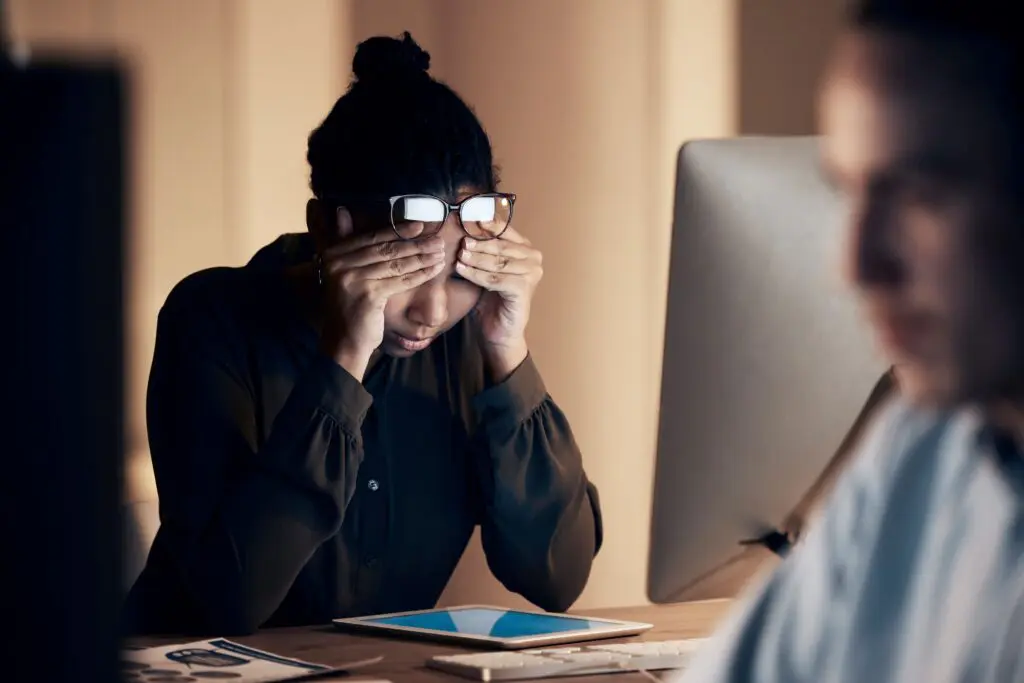Binocular vision dysfunction (BVD) is a complex but often overlooked condition that significantly impacts visual comfort and quality of life. For those unfamiliar, BVD occurs when the eyes fail to align and work together as a single, cohesive team. This misalignment creates strain and confusion in the brain as it struggles to process conflicting signals from each eye, leading to a host of symptoms that can feel puzzling and frustrating.
In this post, we’ll explore what BVD is, its causes, common symptoms, and how vision therapy and specialized interventions can provide lasting relief.
What Is Binocular Vision Dysfunction?
At its core, binocular vision dysfunction is a misalignment of the eyes. While the misalignment might be subtle, even small deviations can force the brain to work overtime to merge the two images from each eye into one cohesive picture. When the brain struggles to achieve this, it often results in visual discomfort and other associated symptoms.

BVD isn’t a single disorder but rather an umbrella term that encompasses several specific issues, including:
1. Vertical Heterophoria: A vertical misalignment where one eye is higher than the other.
2. Convergence Insufficiency (CI): A reduced ability to maintain eye alignment during closeup tasks, such as reading.
3. Divergence Excess (DE): Difficulty maintaining alignment when focusing on distant objects.
These issues can exist independently or in combination, further complicating diagnosis and treatment.
What Causes BVD?
The causes of binocular vision dysfunction are varied and often multifactorial. Some common causes include:
1. Developmental Factors: Many cases of BVD emerge during childhood, often due to incomplete development of the visual system.
2. Head Trauma: Concussions or other forms of traumatic brain injury (TBI) can disrupt the intricate neural pathways that control eye coordination.
3. Genetics: Some people may be predisposed to subtle misalignments due to the shape or positioning of their eyes.
4. Refractive Errors: Uneven prescription needs between the eyes can sometimes exacerbate alignment issues.
5. Neurological Conditions: Disorders that affect the brain, such as multiple sclerosis or stroke, can impact eye alignment and coordination.

Understanding the root cause of BVD is essential to creating a tailored treatment plan, as no two cases are exactly alike.
Common Symptoms of Binocular Vision Dysfunction
BVD can manifest in many ways, often mimicking other conditions or being attributed to unrelated factors. This overlap can make diagnosis challenging. Common symptoms include:
Headaches: Often around the eyes, temples, or forehead, particularly after prolonged reading or screen use.
Double Vision: Seeing two of the same image, especially when tired.
Dizziness and Balance Issues: Feeling unsteady, especially when walking in crowded spaces or navigating uneven surfaces.
Eye Strain or Fatigue: Discomfort during or after visual tasks, such as reading or computer use.

Blurred Vision: Intermittent or persistent blurring of text or objects.
Difficulty with Depth Perception: Struggling with tasks like parking a car or judging distances.
Motion Sensitivity: Discomfort while riding in a car or observing fast-moving objects.
Reading Challenges: Losing one’s place, skipping words, or struggling with comprehension due to visual strain.
These symptoms can significantly impact daily life, making tasks like working, driving, and even socializing feel overwhelming.
Diagnosing Binocular Vision Dysfunction
Accurate diagnosis of BVD requires a thorough and detailed eye examination by an optometrist trained in binocular vision. Standard vision tests, like reading a chart, often miss the subtle misalignments at the heart of BVD.
A comprehensive evaluation typically includes:
1. Near Point of Convergence Testing: Measuring how well the eyes work together when focusing on close objects.
2. Cover Tests: Identifying misalignments by covering and uncovering each eye.
3. Prism Testing: Using specialized lenses to measure the degree of misalignment.
4. Symptom Surveys: Gathering detailed information about visual discomfort and daily challenges.
These assessments allow optometrists to pinpoint the type and severity of BVD, laying the foundation for effective treatment.
Treatment Options for Binocular Vision Dysfunction
The good news is that BVD is treatable. With the right interventions, patients can experience significant relief from symptoms and regain visual comfort.
1. Vision Therapy
Vision therapy is a cornerstone treatment for BVD. This individualized program of eye exercises and activities is designed to retrain the brain and eyes to work together more effectively. It’s not just about strengthening the eye muscles but about building better neural connections and coordination.
Therapy sessions often include:
Eye tracking exercises.
Activities to improve convergence and divergence.
Virtual reality or digital tools for interactive visual training.
Home exercises to reinforce in-office work.
With consistent effort, many patients see dramatic improvements in both symptoms and quality of life.
2. Prism Glasses and Lenses
For some patients, prism lenses provide immediate relief by compensating for the misalignment of the eyes. These specialized glasses subtly bend light entering the eyes, reducing the strain on the brain and improving visual comfort.
Prism lenses are particularly helpful for patients with vertical heterophoria or those who experience significant symptoms while waiting for vision therapy to take effect.

3. Lifestyle Modifications
Simple changes to daily habits can also make a big difference for individuals with BVD:
Taking regular breaks during screen use.
Ensuring proper lighting for reading and work.
Adjusting workstation ergonomics to reduce visual strain.
4. Addressing Underlying Causes
For patients whose BVD stems from head trauma or neurological conditions, additional treatments like physical therapy, occupational therapy, or neurological rehabilitation may be necessary.
Why Early Intervention Matters
Untreated BVD can lead to worsening symptoms over time, potentially affecting academic performance, work productivity, and overall well-being. For children, BVD often goes unnoticed, as they may not realize their vision is different from others’. Unfortunately, this can lead to difficulties in school and even misdiagnosis of attention or learning disorders.
For adults, BVD can become a barrier to career advancement, as the strain and discomfort make it challenging to focus on demanding tasks.
The earlier BVD is identified and treated, the better the outcomes. Vision therapy is often most effective when started sooner, as the brain is more adaptable.
A Personal Perspective
As an optometrist, I’ve seen firsthand the transformative impact that diagnosing and treating BVD can have on patients’ lives. I’ve worked with students who went from struggling to read to excelling academically, and with professionals who rediscovered their confidence after years of unexplained discomfort.
One patient’s story stands out – a young athlete who was experiencing double vision during practice, affecting their performance and self-esteem. Through a combination of prism lenses and targeted vision therapy, they regained clarity and excelled in their sport.
A Path to Clarity
Binocular vision dysfunction is more than just an eye issue; it’s a quality-of-life issue. The good news is that with proper diagnosis and treatment, individuals can find relief from symptoms and rediscover the joy of clear, comfortable vision.
If you or someone you know is struggling with unexplained visual discomfort, headaches, or difficulty focusing, consider scheduling a comprehensive eye exam with an optometrist with a special interest in binocular vision. The road to relief may be closer than you think.
By addressing the root causes of BVD and empowering patients with tailored solutions, we can help them see the world – and themselves – more clearly.
Until next month,
Dr. Paul Rollett, FOVDRA




